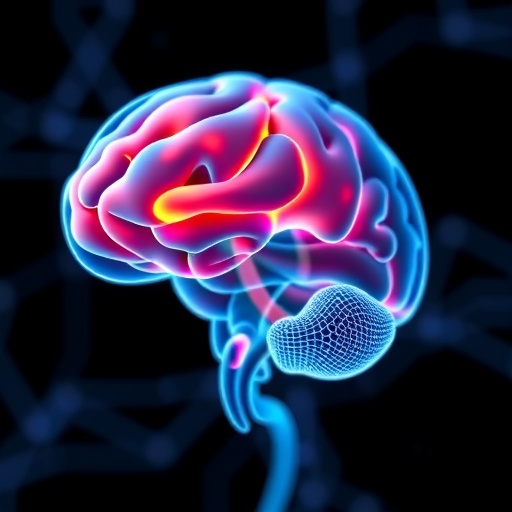In the intricate landscape of neonatal medicine, the pursuit of reliable biomarkers capable of predicting outcomes and guiding therapeutic interventions remains paramount. Neonatal encephalopathy (NE), a devastating neurological condition affecting newborns, has long challenged clinicians due to its heterogenous etiology and complex pathophysiology. Recent advances have thrust the high-mobility group box 1 (HMGB1) protein into the spotlight, offering a promising avenue not only for prognosis but also as a potential target for innovative treatments. This emerging research underscores an urgent need to decode the multifaceted roles of HMGB1 in neonatal brain injury, revealing nuances that could redefine neonatal care paradigms.
Neonatal encephalopathy is characterized by disrupted neurological function in newborns, frequently resulting from hypoxic-ischemic injury during or around the time of birth. The clinical manifestations range from subtle behavioral changes to profound neurological deficits or death. Despite the strides in neonatal intensive care, predicting neurological outcomes remains elusive, largely due to the limitations of current diagnostic tools. Inflammation and cell death within the brain have been implicated centrally in the evolution of NE, shifting attention toward molecular mediators that orchestrate these processes.
Enter HMGB1, a highly conserved nuclear protein traditionally known for its role in chromatin architecture and gene transcription. Intriguingly, outside the nucleus, HMGB1 functions as a potent damage-associated molecular pattern (DAMP), capable of instigating inflammatory cascades when released extracellularly during cellular stress or injury. This dualistic nature situates HMGB1 at the crossroads of cell survival and death, making it a molecule of intense investigation within the context of neonatal brain injury.
Experimental evidence has illuminated that HMGB1 is rapidly liberated from necrotic neurons and activated microglia following hypoxic-ischemic insults, amplifying inflammatory signaling pathways such as those mediated by the toll-like receptors (TLRs) and receptor for advanced glycation end products (RAGE). This molecular crosstalk initiates a complex inflammatory milieu that exacerbates neuronal damage and hampers regenerative efforts. Such findings propose HMGB1 not merely as a biomarker reflecting injury but as an active participant driving secondary brain damage.
The clinical relevance of HMGB1 has been substantiated by studies measuring its levels in cerebrospinal fluid and plasma of neonates diagnosed with encephalopathy. Elevated HMGB1 concentrations correlate with severity of brain injury, neurodevelopmental outcomes, and the extent of inflammatory response. These correlations pave the way for employing HMGB1 as a prognostic biomarker, offering clinicians a quantifiable parameter to stratify risk and tailor therapeutic approaches accordingly.
The potential therapeutic implications of targeting HMGB1 are transformative. Pharmacological agents capable of neutralizing extracellular HMGB1 or inhibiting its interaction with TLRs and RAGE have demonstrated neuroprotective effects in preclinical models. These interventions attenuate inflammation, reduce infarct size, and improve functional recovery, heralding a novel class of therapies that transcend symptomatic management to address the underlying molecular drivers of injury.
Understanding the kinetic profile of HMGB1 release and its downstream effects is crucial for optimizing therapeutic windows. HMGB1 exhibits a biphasic pattern post-injury, with an early peak associated with acute necrosis and a later elevation linked to ongoing inflammation and glial activation. Timing therapeutic intervention to coincide with these phases could maximize efficacy while minimizing unintended immunosuppression or interference with reparative mechanisms.
Moreover, the intricate interplay between HMGB1 and other inflammatory mediators such as cytokines and chemokines compounds the complexity of neonatal encephalopathy pathogenesis. Disentangling these pathways is essential for designing multi-targeted interventions that can modulate the neuroinflammatory cascade holistically. For instance, combined therapies that inhibit HMGB1 alongside anti-cytokine agents may yield synergistic neuroprotection.
From a diagnostic perspective, integrating HMGB1 measurement with neuroimaging and electrophysiological assessments could enhance the predictive accuracy of outcome models. Advanced imaging techniques like MRI provide structural and functional insights, yet often fall short in early detection of subtle injury. Biomarker-based assays incorporating HMGB1 could bridge this gap, facilitating earlier intervention and personalized care strategies.
It is also imperative to consider the translational hurdles in bringing HMGB1-centered diagnostics and therapeutics to clinical practice. Variability in assay sensitivity, standardization of sample collection, and understanding the influence of gestational age, comorbidities, and treatment modalities on HMGB1 dynamics necessitate rigorous clinical validation. Multicenter longitudinal studies will be instrumental in establishing the clinical utility and safety profile of HMGB1-targeted approaches.
Emerging data also suggests possible genetic and epigenetic regulators of HMGB1 expression and release, adding another dimension to its role in neonatal encephalopathy. Variants in genes encoding HMGB1 or its receptors might influence individual susceptibility to injury and response to therapy. Epigenetic modifications driven by perinatal environmental factors could modulate HMGB1 pathways, offering potential biomarkers for risk stratification and targets for preventative interventions.
The mechanistic insights gleaned from HMGB1 investigations extend beyond neonatal encephalopathy, with implications for adult neurodegenerative and acute CNS disorders. The universality of HMGB1’s involvement in neuroinflammation underscores the broader relevance of this protein as a therapeutic target. Lessons learned from neonatal studies could thus catalyze breakthroughs in managing stroke, traumatic brain injury, and chronic neuroinflammatory diseases.
In summary, the emerging portrait of HMGB1 as both a biomarker and a therapeutic target in neonatal encephalopathy represents a frontier in neonatal neuroscience. Its multifactorial roles in mediating injury and recovery afford opportunities to refine prognostic tools and develop interventions that customize care. Achieving this vision demands concerted interdisciplinary efforts encompassing molecular biology, clinical neonatology, pharmacology, and bioengineering, poised to transform outcomes for the most vulnerable patients.
As research accelerates, the promise of HMGB1-focused strategies in neonatal encephalopathy moves closer to clinical reality. The prospect of mitigating lifelong disability and enhancing quality of life for affected infants fuels an intense drive toward innovation. With each new discovery, the scientific community edges nearer to unraveling the profound complexities of neonatal brain injury and translating molecular insights into life-saving therapies.
Subject of Research: Biomarkers in neonatal encephalopathy, focusing on high-mobility group box 1 (HMGB1) protein in prognosis and therapy.
Article Title: Biomarkers in neonatal encephalopathy: the role of high-mobility group box 1 in prognosis and potential therapy.
Article References:
Molloy, E.J. Biomarkers in neonatal encephalopathy: the role of high-mobility group box 1 in prognosis and potential therapy. Pediatr Res (2025). https://doi.org/10.1038/s41390-025-04309-1
Image Credits: AI Generated




